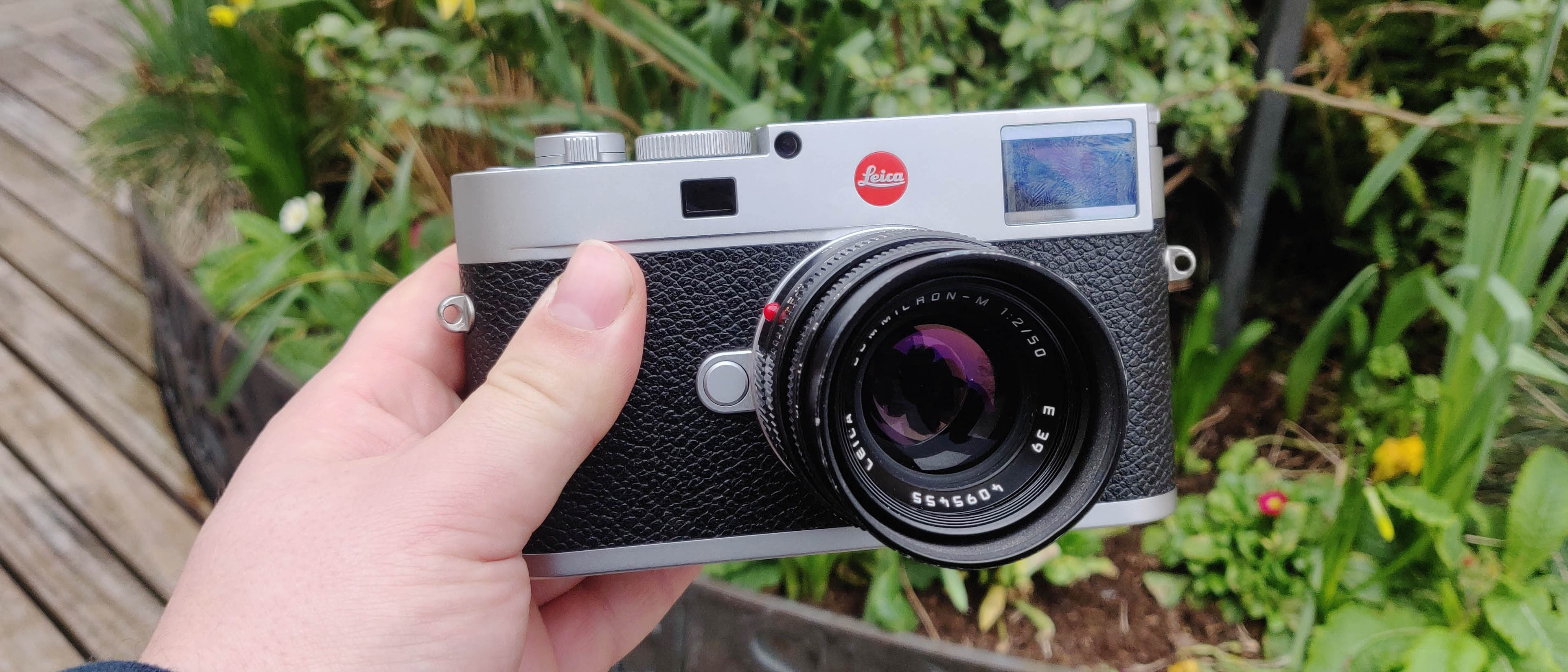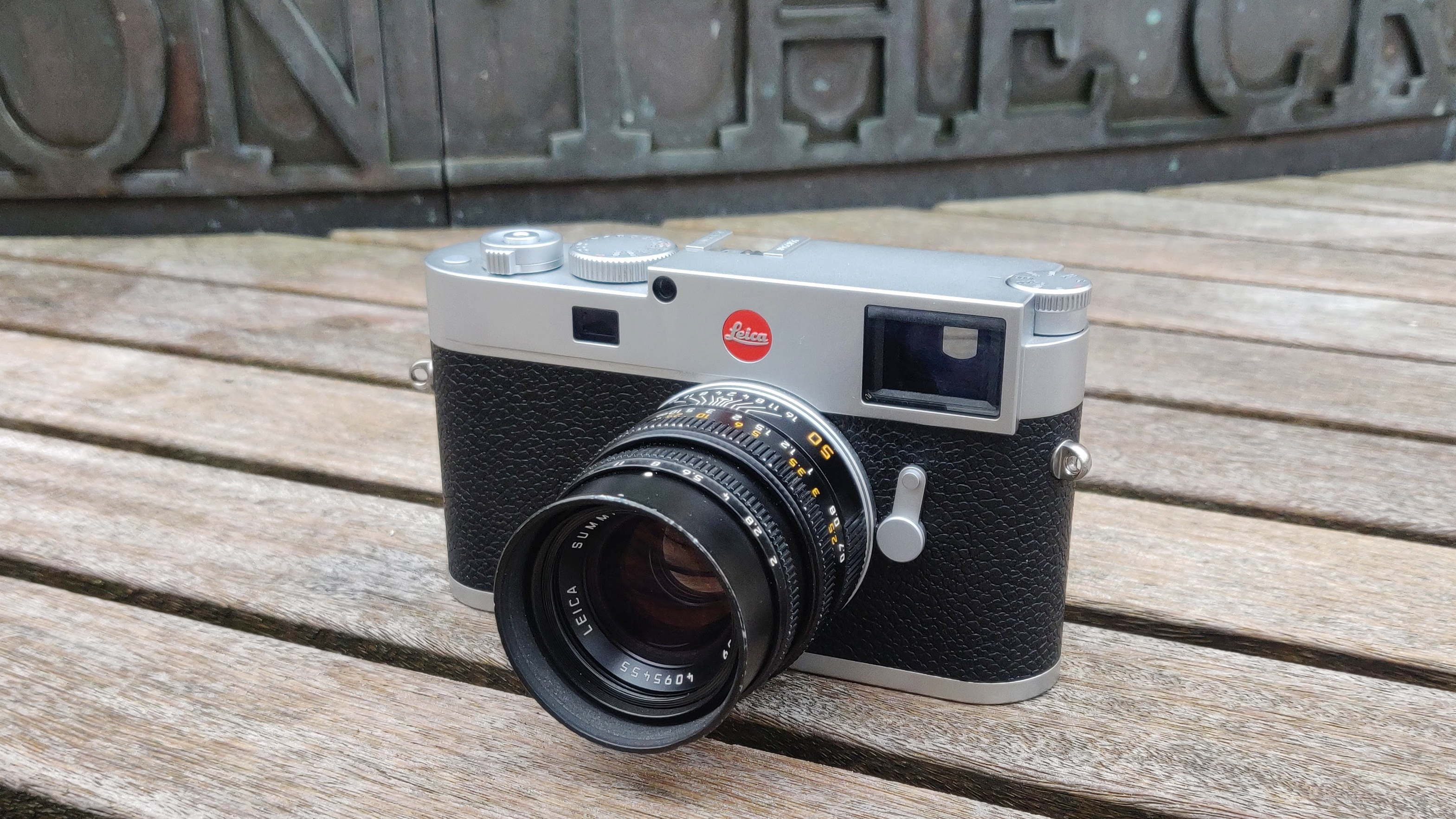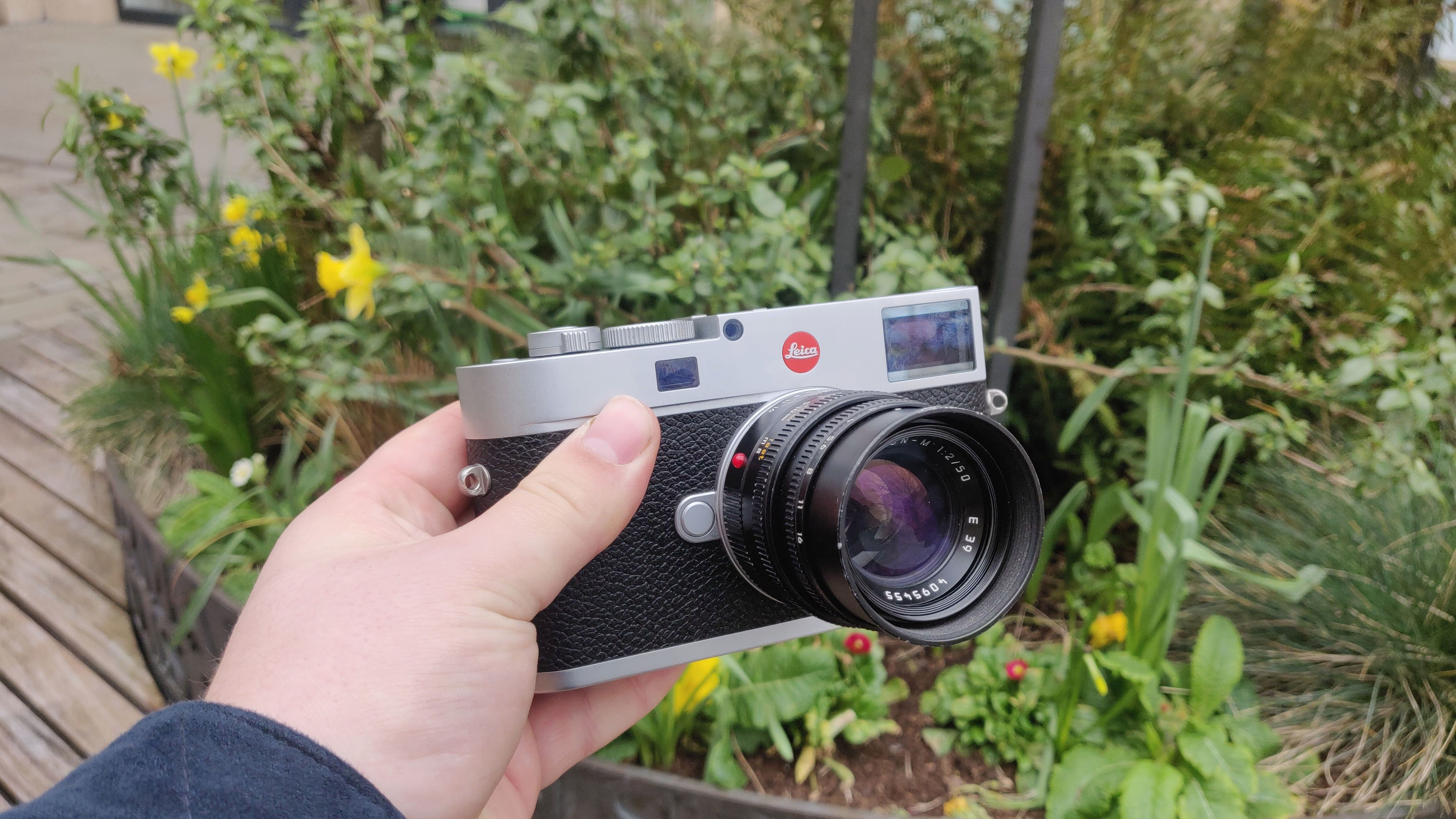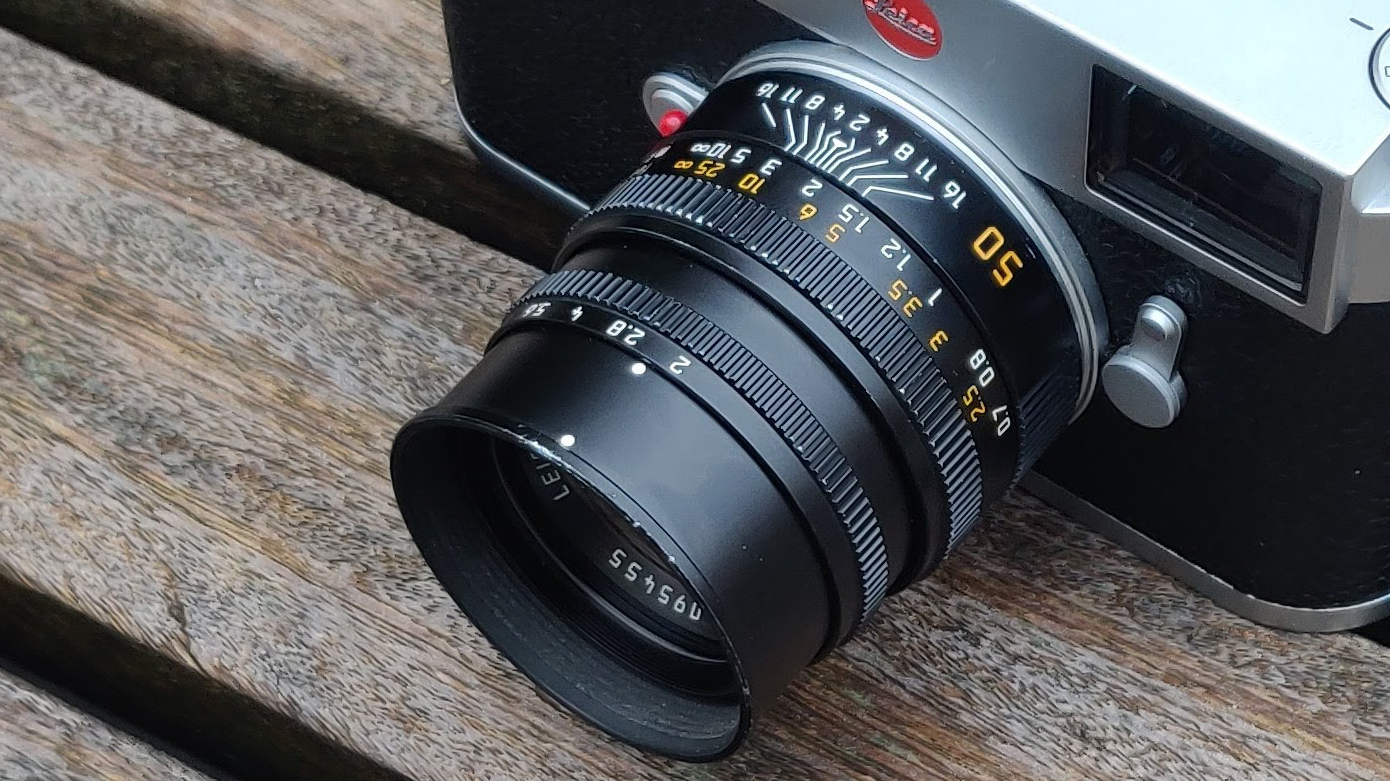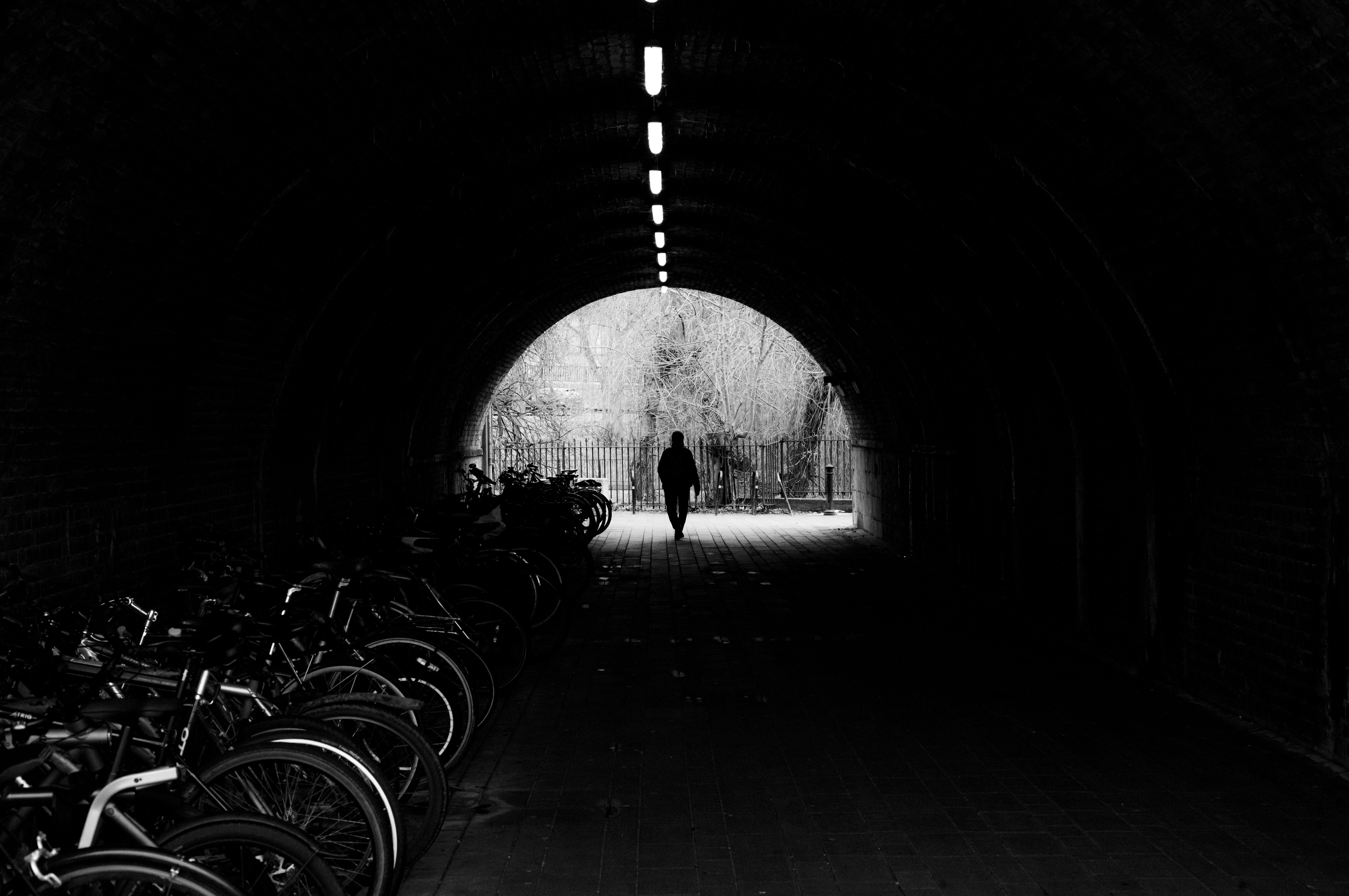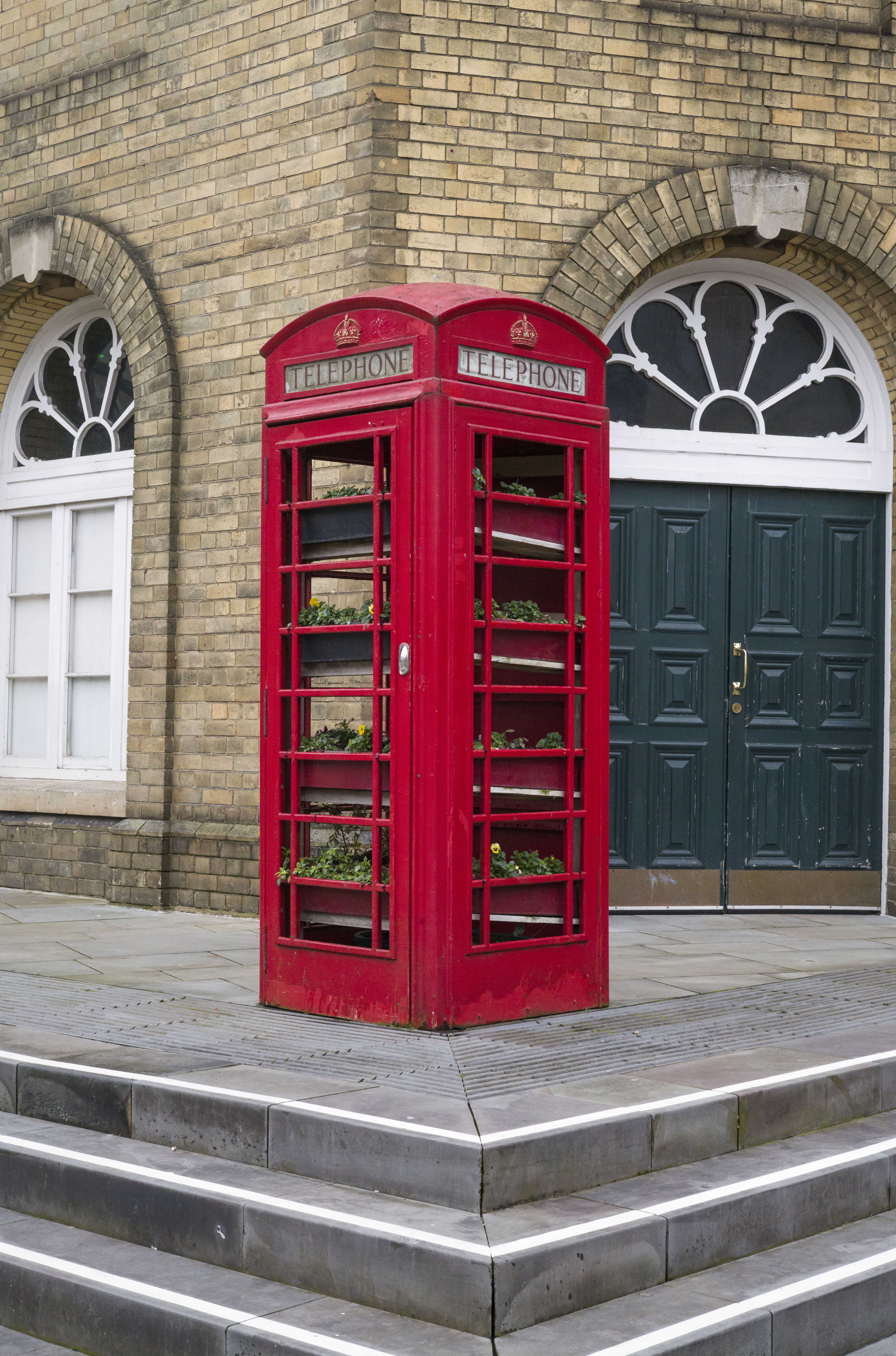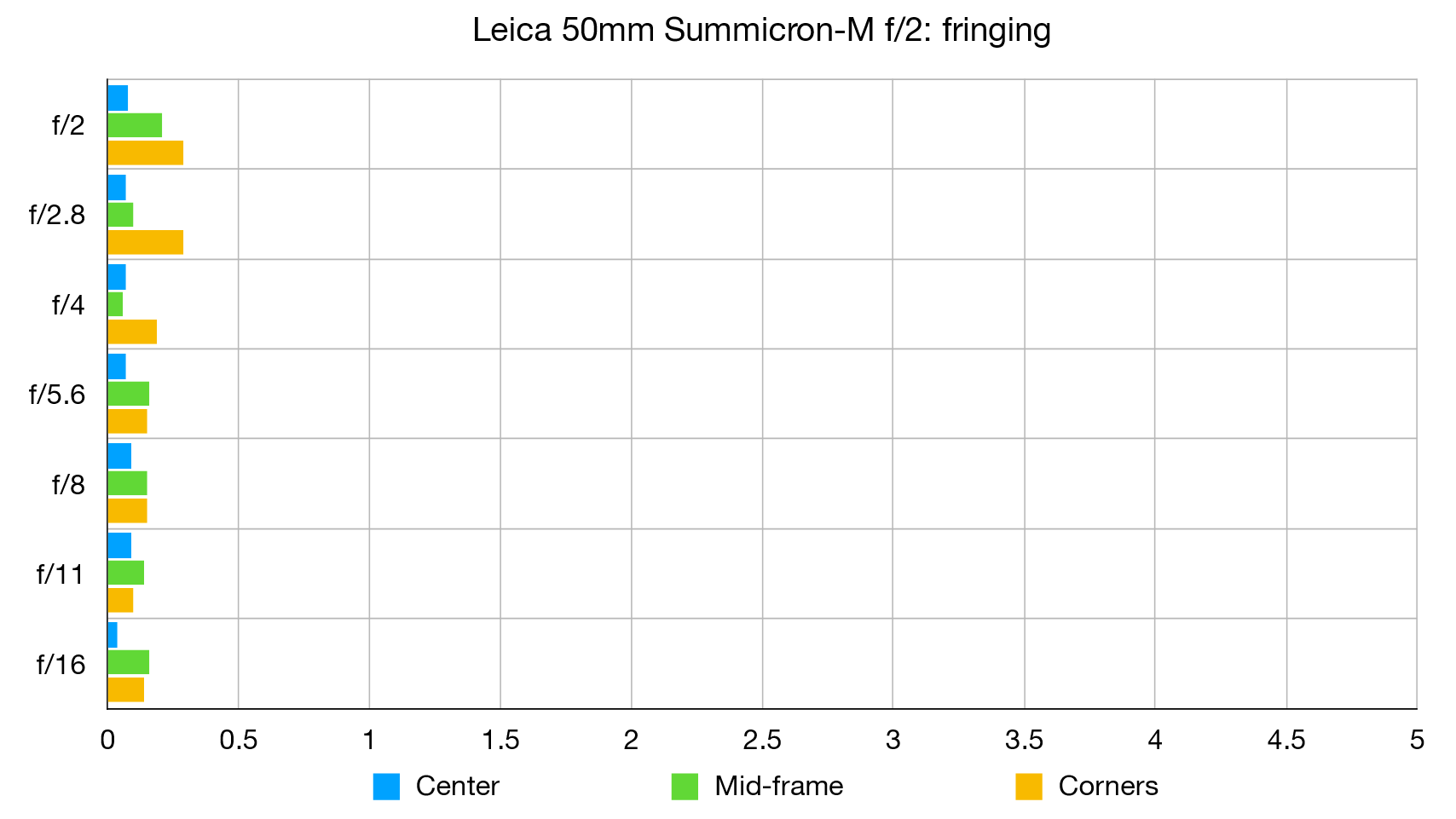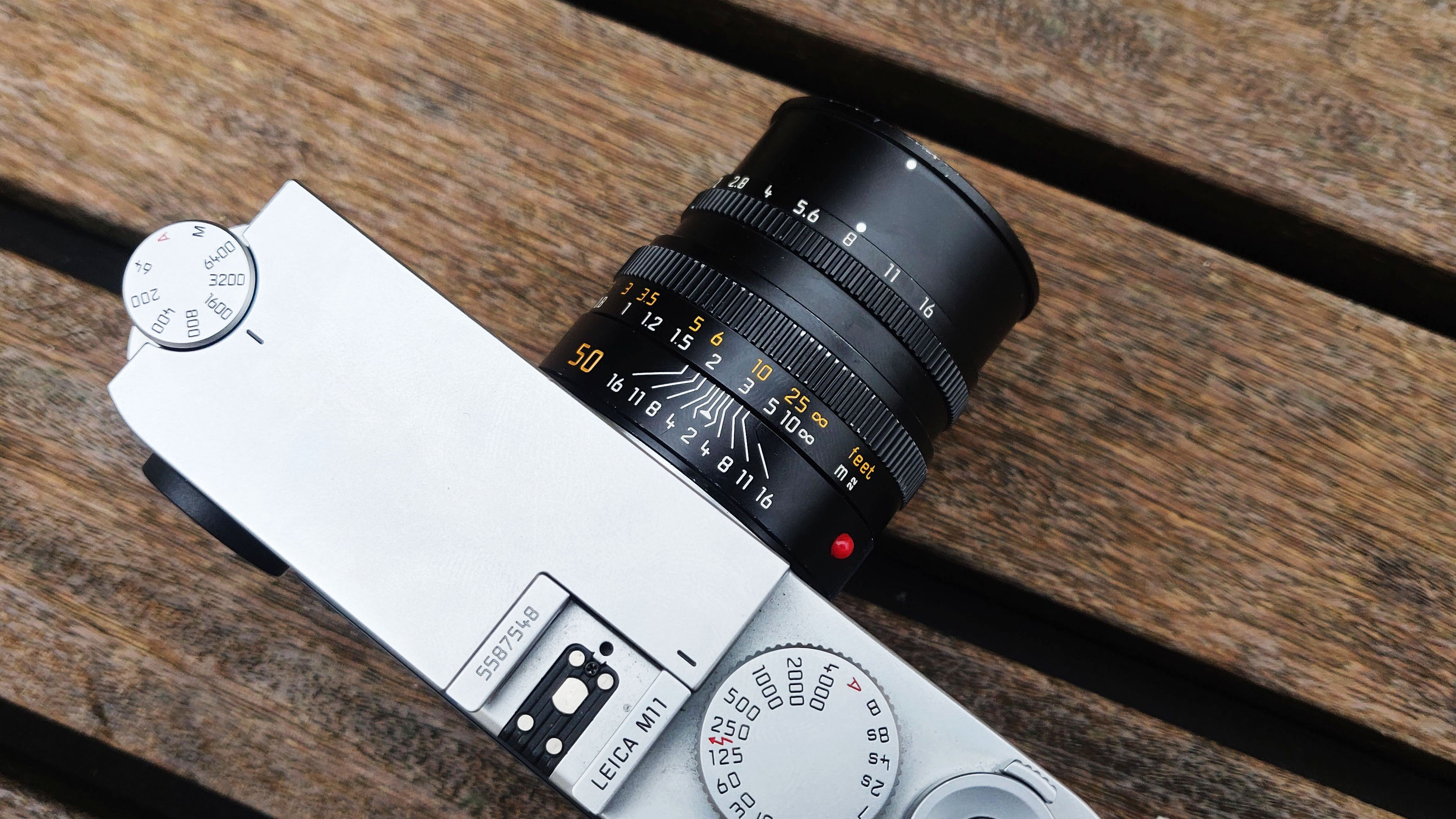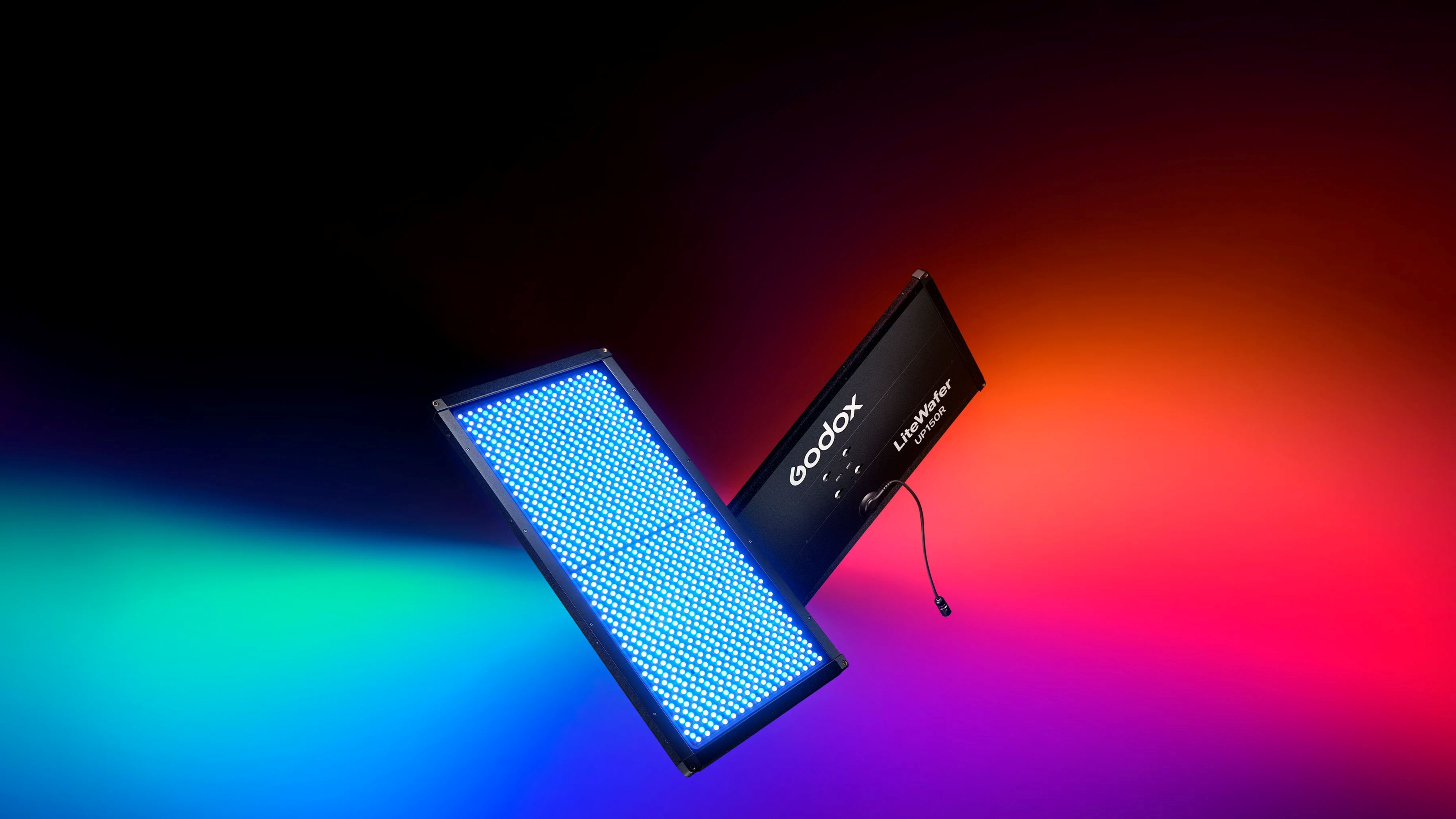Digital Camera World Verdict
For those looking for an M-mount 50mm lens that is compact, well-constructed, and really packs a punch in image quality and contrast the Leica 50mm Summicron-M f/2 is the ideal candidate to keep on your camera for a very long time. With its optical quality almost on par with the 50mm APO, I would say that the 50mm Summicron-M f/2 is a real gem of a lens.
Pros
- +
Compact form factor
- +
Amazing image quality
- +
Built like a tank
Cons
- -
Pricey
- -
39mm filter thread
Why you can trust Digital Camera World
The Leica 50mm Summicron-M f/2 has long been the little brother to the more attractive Leica 50mm APO Summicron-M f/2 APSH, but just because it's less expensive and might not have the global reputation of the APO doesn't mean it should be overlooked.
This lens is without a doubt a true delight for all 50mm users, It is compact, has a quick focus throw, renders images to a superb standard, and also has a built-in lens hood that slides out - all in all it is a true dream for all 50 mm users, while it might be missing the Leica traditional focus tab the 50mm Summicron-M f/2 operates wonderfully, but scroll down and find out full thoughts on this little delight.
Leica 50mm Summicron-M f/2 Specifications
Mount: Leica M-mount
Full frame: Yes
Autofocus: No
Image stabilization: No
Lens design: 8 elements in 5 groups
Maximum aperture: f/2
Minimum aperture: f/16
Angle of view: 47°
Minimum focusing distance: 2.3' / 70 cm
Maximum reproduction ratio: 1:11.5
Filter size: 39 mm
Dimensions: 1.7 x 2.1" / 43.5 x 53 mm
Weight: 8.5 oz / 240 g
Leica 50mm Summicron-M f/2 Key features
50mm has long been the 'go-to' lens if you want your photography to have that realistic perspective and gives a true-to-life rendition to images. This 50mm Summicron-M f/2 key features are really its compact form factor and its proven optical design.
50mm has long been used by legendary Lecia photographers such as Henri-Cartier Bresson or David Douglas Duncan as it is considered the best lens to replicate what the eye naturally sees.
Along with a compact size, it offers the added benefit of an extended hood built into the lens, so when things get really bright you can easily avoid any flares or ghosting from this lens, distortion is also very low on the Leica 50mm Summicron-M f/2 and keeps an even contrast while stepping down the aperture scale.
Overall, this lens will produce stand-out images of great clarity even in the corners and thanks to its compact form and speedy focus range this is certainly a lens that you can use for any event and be kept on your camera at all times.
The best camera deals, reviews, product advice, and unmissable photography news, direct to your inbox!
Leica 50mm Summicron-M f/2 Build and Handling
As you would expect from a lens from Leica the 50mm Summicron-M f/2 has fantastic build quality and gives a solid feel in hand. While it is quite a light lens in comparison to other sought-after lenses from the German manufacturer, weighing only 240g, it doesn't feel as if you're being short-changed in any way.
The Leica 50mm Summicron-M f/2 offers a wonderful controlled aperture ring that simply glides with each F-stop with a noticeable click when selected, along with a super smooth manual focusing ring that has very little distance from 0.7m to infinity, something vastly improved upon from the previous version.
This new and improved focus throw allows for quick and accurate focus while on the move, Like all 50mm lenses zone focusing is tight, only giving you a few feet of critical focus, even when stopped down to f/8.
I would normally complain about a focus tab not being present on this lens as many Leica lenses are renowned for having this handy attachment on their lenses however, on this occasion, I will say that the focus ring is so smooth in its performance that I was presently surprised when gaining critical focus, and would say that it's not needed on the lens.
Leica 50mm Summicron-M f/2 Performance
Given that this style of the lens has been in production since 1979 it is obvious that it would be a great performer, or why would Leica keep making it? however, what is surprising was how it rendered images. In our previous review of the Leica 50mm APO Summicron-M f/2 ASPH, I said I was blown away by how well that lens rendered images; in this review of the Leica 50mm Summicron-M f/2 I'm going to say that this really is on par with the 50mm APO, at a fraction of the price.
This lens really is that good and while testing it on a range of subjects from street to still life the Leica 50mm Summicron-M f/2 delivered the goods at every aperture - if I have to be critical I would say images are not as sharp at f/2 when compared to the APO equivalent, but it's not far off the mark and I was left feeling very impressed with its performance.
The lens gives a very detailed rendering of whatever subject you point it at, with good solid contrast, not so much as giving its own look, but enough to play around with in Adobe Photoshop to edit to your own style.
Leica 50mm Summicron-M f/2 Sample Images

Leica 50mm Summicron-M f/2: Lab results
We run a range of lab tests under controlled conditions, using the Imatest Master testing suite. Photos of test charts are taken across the range of apertures and zooms (where available), then analyzed for sharpness, distortion and chromatic aberrations.
We use Imatest SFR (spatial frequency response) charts and analysis software to plot lens resolution at the center of the image frame, corners and mid-point distances, across the range of aperture settings and, with zoom lenses, at four different focal lengths. The tests also measure distortion and color fringing (chromatic aberration).
Sharpness (line widths/picture height):
Sharpness is excellent in the center of frame at all apertures. Mid-frame and corner sharpness is slightly less impressive at f/2, but still respectable, and by f/4 sharpness is incredibly consistent across the entire image frame.
Fringing:
Another seriously impressive performance - fringing is as good as non-existent, even in the extreme corners of frame, and at any aperture.
Distortion: -0.14
There's barely a trace of barrel distortion. This is as close to a distortion-free lens as you'll ever find.
Leica 50mm Summicron-M f/2: Verdict
For those looking for a 50mm lens that is compact, well-constructed, and really packs a punch in image quality and contrast the Leica 50mm Summicron-M f/2 is the ideal candidate to keep on your camera for a very long time. With its optical quality almost on par with the 50mm APO, I would say that the 50mm Summicron-M f/2 is a real gem of a lens.
Thanks to its compact design and hard-hitting image quality it makes it very hard to recommend anything else within the Leica range, and the Leica 50mm Summicron-M f/2 ticks all the boxes, while even having a built-in lens hood when things get really right, this well-designed lens really holds it own in any environment you shoot in, images at f/2 are not as sharp as its high expensive APO equivalent, but for everyday use, I would say it is pretty close which images being sharp with good tonality.
If you're looking to get that 50mm look that has been used by famous photographers around the world, I will highly recommend the Leica 50mm Summicron-M f/2, everything about it has been designed in a fashion so it will never be cumbersome to hold, carry or shoot with - it's a true performer that will never disappoint.
If you enjoyed this, you might also like our Leica M11 review, Leica Q2 Reporter review, and the best Leica M lenses.

For nearly two decades Sebastian's work has been published internationally. Originally specializing in Equestrianism, his visuals have been used by the leading names in the equestrian industry such as The Fédération Equestre Internationale (FEI), The Jockey Club, Horse & Hound, and many more for various advertising campaigns, books, and pre/post-event highlights.
He is a Fellow of the Royal Society of Arts, holds a Foundation Degree in Equitation Science, and holds a Master of Arts in Publishing. He is a member of Nikon NPS and has been a Nikon user since his film days using a Nikon F5. He saw the digital transition with Nikon's D series cameras and is still, to this day, the youngest member to be elected into BEWA, the British Equestrian Writers' Association.
He is familiar with and shows great interest in 35mm, medium, and large-format photography, using products by Leica, Phase One, Hasselblad, Alpa, and Sinar. Sebastian has also used many cinema cameras from Sony, RED, ARRI, and everything in between. He now spends his spare time using his trusted Leica M-E or Leica M2, shooting Street/Documentary photography as he sees it, usually in Black and White.
